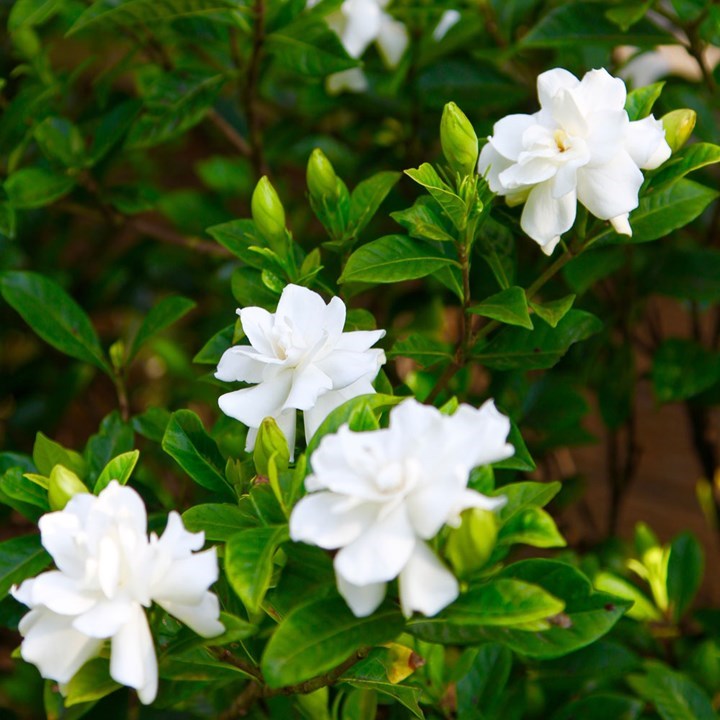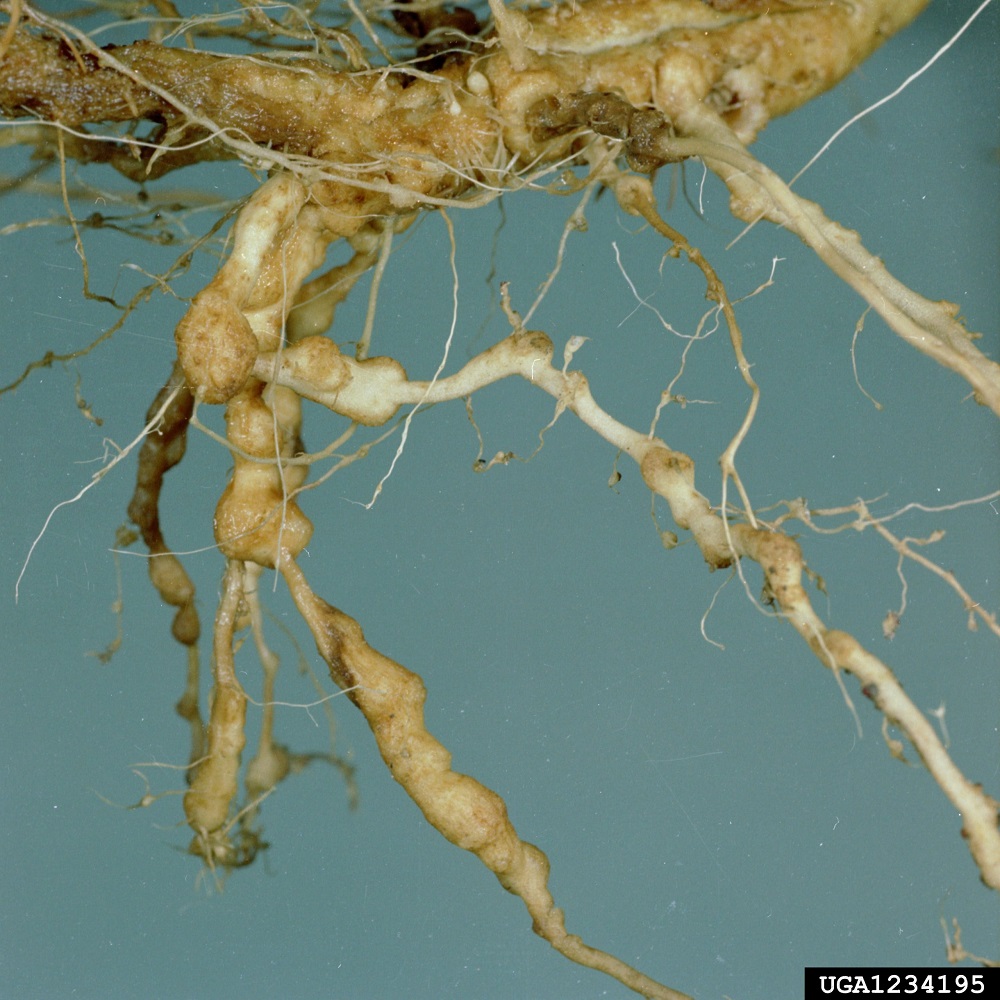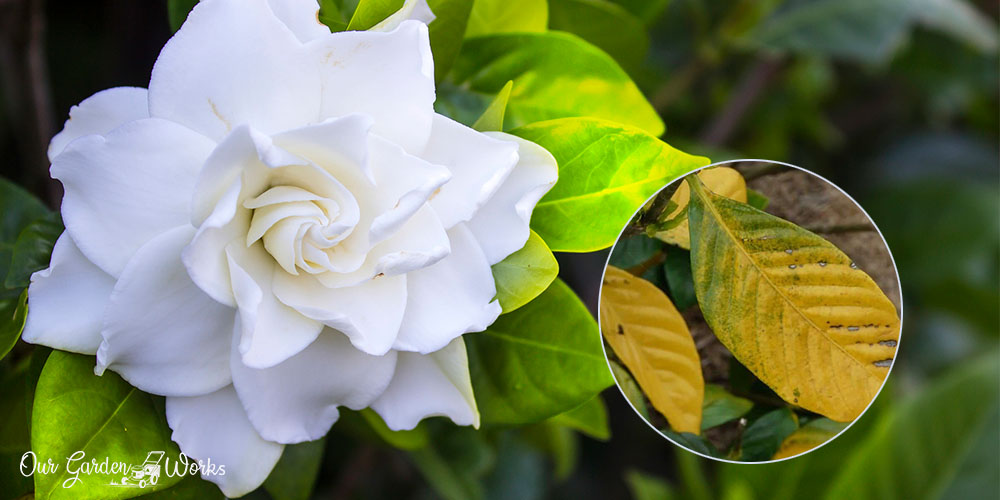Gardenia is a sensitive plant. It easily picks up temperature changes and needs a precise amount of sun and water. Naturally, the leaves of gardenia turn yellow as they age.
However, changes in the color of the leaves can also indicate that it is not getting enough nutrients from the soil or experiencing other plant issues.
In this post, we will share another wonderful use of vinegar in treating gardenias with yellow leaves.
We will also feature other causes of yellow leaves in gardenias and how you can resolve them.
Plus, we will answer your FAQs in taking care of this temperamental evergreen.
How Vinegar Helps in Treating Yellow Leaves in Gardenias
Plants, in general, will show some signs through their leaves that something is not right with the soil.
Gardenias are acid-loving plants that grow and thrive in soil with a PH level of 5.0 to 6.0. Though they can grow in alkaline soils, they may suffer from nutrient deficiency and have stunted growth down the road.
If you have other acid-loving plants like azaleas that thrive in the soil in your garden, it is a good indication that the yellowing of leaves is coming from another problem.
However, if the soil is too alkaline, gardenias may find it difficult to absorb the nutrients from the soil and suffer from nutrient deficiency.
Iron deficiency is common in gardenias grown in alkaline soil. Alkaline soils can turn iron into solid which can’t be absorbed by the roots of the plants.
It can result in iron chlorosis which is a process where the leaves start to fade from dark green to yellow. Iron is a key nutrient needed by plants in producing chlorophyll.
In severe cases, the leaves will start to scorch and develop brown spots on the edges due to dead plant cells.
The good thing is you can always adjust the PH levels of the soil with a vinegar solution, fertilizers for acid-loving plants, or coffee grounds.
Ideally, you should condition the soil PH before planting Gardenias. However, several factors can alter the soil PH, so adjustments will always be part of your plant care routine. To prevent sudden changes in soil acidity, applying mulch can be helpful.
You can also use blood meal or fish emulsion to adjust soil acidity. For this post, we chose to share the vinegar solution since it is readily available for use in any household.
Plus, you don’t have to spend a lot on it.
Vinegar contains acetic acid that helps lower the PH levels of the soil. Unprocessed vinegar also contains extra vitamins that can be beneficial to your plants.
The white vinegar sold commercially also works just fine, but may not be rich in extra treats for your plants.
Now let’s start mixing!
How To Treat Yellow Leaves in Gardenia with Vinegar

Your good old vinegar is a multi-purpose solution not only in keeping your house squeaky clean but also works wonders in plant care.
Apple cider vinegar is probably one of the well-known varieties of vinegar that contains a lot of health benefits to humans.
Well, it is good for plants too!
Since Apple cider vinegar is unfiltered, it retains the organic vitamins and minerals that are good for your plants. It can also help feed the microbes and microorganisms in the soil which is a double-win for your plants.
But since it is highly acidic, you must first dilute it with water.
Here’s how:
Materials:
- 1 cup Apple cider vinegar (ACV) or white vinegar
- 1 gallon of water
- A water tank or garden sprinkler
Directions:
- Mix 1 cup of ACV with water.
- Mix well.
- Transfer the diluted vinegar solution to your water tank.
- Apply the vinegar solution every time you water your plants.
You might like: How to Get Rid of Grasshoppers with Vinegar? A Step-by-Step Guide
5 Benefits of Vinegar To Plants
In general, gardeners not only use vinegar for adjusting the soil PH levels. It is also used as:
- Kills weeds: The intense acidity from undiluted vinegar can help you get rid of the pesky weeds in your garden. Next time you see them popping in your garden spray them with vinegar and your plants will thank you for it.
- Insect deterrent: The combination of diluted vinegar and a few drops of dish soap are long used as insect sprays. It is among the holy grail of organic gardeners in keeping pests like aphids, whiteflies, and larvae at bay.
- Fungus prevention: Do you immediately go for fungicides for signs of molds and fungus in your plants? Well, before that, why not try mixing chamomile tea and vinegar and apply it directly to the infected plants. For the measurements, mix 1 cup of chamomile tea and two teaspoons of vinegar.
- Kills and deter ants: Ants can be one of the stubborn visitors of our gardens and homes. To keep them at bay, Mix 1 cup of vinegar and 1 cup of water and use it to drive them away from your plants and your home.
- Deter slugs and snails: Crawlers like snails and slugs hate the smell of vinegar. Keep them at bay by spraying the vinegar solution around your plants.
Other Causes of Yellow Leaves in Gardenia

Soil PH problems are only one of the reasons why the leaves of gardenia are starting to change in color.
Other causes include:
1. Overwatering and Root Rot
Gardenias needs an inch of water or rain every week. They love moist and damp soil but not to the point of soggy.
Overwatering them creates a perfect environment for fungal diseases to develop in the roots.
Once the fungi start to attack the plant, the roots will start to decay which leads to changes in leaf color or yellow leaves.
Keep the water at a minimum of an inch per week. Check the soil if it is moist by placing your finger in the soil.
If it comes out shiny due to excess water then the gardenia is overwatered. In that case, you should adjust the soil drainage and avoid overwatering the soil.
2. Not Enough Sun Exposure
Being a tropical plant, gardenias love full sun exposure. However, they can be overwhelmed with the scorching afternoon sun too.
Ideally, gardenias thrive in the early morning sun and partial shade in the afternoon.
In colder seasons and climates, they can handle the sun throughout the day as long as the soil is covered with mulch to keep the soil damp.
Gardenias grown in pots and indoors can’t tolerate the direct sun and should be placed in an area where they can get indirect light.
3. Poor Soil Drainage
Gardenias enjoy damp and well-drained soil. Soggy soil creates an opportunity for fungal diseases to attack your gardenias and trigger root rot. The combination of potting mix and compost makes an ideal soil for gardenias.
As much as possible, avoid using native or clay soil as they tend to clog and clump around the plant roots/ thus, leading to nutrient deficiency.
4. Low Temperature
Among house plants, gardenia is probably the most sensitive when it comes to temperature. It can pick up sudden changes in temperature that leads to changes in leaf color.
The best temperature for gardenias should not be lower than 15 degrees Celsius or 60 degrees Fahrenheit. Otherwise, the leaves will start to turn yellow and drop. During the day, they grow best at 18 to 21 degrees Celsius and 15 to 18 degrees Celsius at night.
To help add humidity to the air, you can place a humidifier near your gardenias to help adjust the temperature and keep the leaves as green as they can be.
5. Nematodes

Nematodes are soil-borne worms that feed off the roots of plants. Signs that nematodes are damaging your plant include yellow, leaves, stunted growth. Dead branches, and swollen roots.
Sadly, there are no solutions for nematodes just yet.
What you can do is get rid of severely affected gardenias and avoid planting gardenias in that area again.
Taking Care of Gardenias
Healthy plants are less likely to develop any disease and get infested by pests.
To provide the best care for your gardenias, here are their specific needs, ranging from their soil condition up to the ideal watering routine.
How to prepare the soil for gardenias
Gardenias are acid-loving plants and love well-drained soil. So, before planting gardenias, make sure to lower the soil’s PH level with a vinegar solution or blood meal.
To encourage good soil drainage, you can use a potting mix for gardenias in containers and mix compost for the in-ground ones.
How much sunlight do gardenias need?
Gardenias can’t handle the extreme heat of the sun. Too much or little sun exposure of gardenias can lead to yellow leaves and stunted growth.
That means, they need the precise sunlight metrics below:
- Hot climates: Morning sun and afternoon shade.
- Cool climates: Can tolerate full sun(mulched soil)
- Gardenias in indoor and outdoor containers: Indirect sun.
What is the best temperature for gardenias?
The best temperature for gardenias should not be lower than 15 degrees Celsius.
They thrive in temperatures between 15 to 21 degrees Celsius. They also need high levels of humidity for better plant health and increased bud production.
How to avoid overwatering gardenias
Gardenias require at least an inch of water weekly. If you’re in doubt about watering them, check the soil with your fingers to see if it’s too dry or damp enough.
You should also water them through soil drench and avoid watering them through their foliage to prevent any chances of transmitting fungal diseases.
It is also a good practice to water gardenia with distilled water every month to dissolve the accumulated fertilizer salts in the soil.
You might also like: What Are The Best Fertilizers For Gardenias? – Reviews and Top Picks
Frequently Asked Questions (FAQs)
Should I remove yellow leaves from gardenia?
You can remove the yellow leaves of gardenia to encourage new growth and make your gardenia look better.
You can pluck them off but sometimes they also fall off on their own.
However, it’s also best to figure out what’s causing the leaves to turn yellow, especially if it has a pattern.
How do I make my gardenia soil acidic?
To make a gardenia soil acidic, you can use a vinegar solution, compost, or coffee grounds.
If acidic plants around the area are flourishing then that’s a good indication that you got the right acidity level of the soil.
A PH meter would also be helpful to get the right soil acidity for gardenias which is around 5.0 to 6.0 PH levels.
Is Vinegar safe for plants?
Vinegar is safe for plants as long as it’s diluted in water. It can serve as an insecticide, a fungicide, and a soil acidified.
The unfiltered types of vinegar like apple cider vinegar contain vitamins and minerals that also help nourish the plants and the microbes in the soil.
Are yellow leaves a sign of overwatering?
Yes. Overwatering can prevent the roots from absorbing the nutrients in the soil and trigger nutrient deficiency. It also puts plants at risk for root rot and encourages the growth of fungal diseases.
Can a yellow leaf turn green again?
If the yellow leaves are due to nutrient deficiency, they might turn green again.
Other than that, they will not likely go back to green and should be plucked off to encourage new growth.
Sometimes, they can fall off on their own, so you can just let them be. Instead, focus on finding out what’s causing the leaves to turn yellow.
Do Gardenias like eggshells?
Eggshells are rich in calcium that can help gardenias produce better and bigger blooms.
Calcium contributes to cell development in plants and keeps the cell membranes intact and healthy.
How to prevent gardenia buds from dropping?
There are a lot of possible reasons why gardenia buds are dropping. Since gardenia is quite sensitive any changes in its environment may cause it to readjust and affect bud formation.
The possible causes and solutions include :
- Infrequent watering: Try to keep the soil evenly moist and not wet or soggy. Otherwise, gardenias will have yellow leaves or buds falling off.
- Too much direct sunlight: Put your gardenias in a place where they can only get indirect sunlight. You can also put a net or a sheet of thin fabric to block excess sunlight.
- Low humidity: Gardenias need an adequate amount of humidity. So, when the air is dry, place a humidifier near the gardenia.
- Soil adaption issues: Try not to move your gardenias from one pot to another since they can get stressed when place in a new environment
- Nutrient deficiency: Probably the first thing that comes to mind when you see a bud drop is a nutrient deficiency. Apply a fertilizer suitable for gardenias, follow the labels, and avoid overfertilization.
- Any drastic change in temperatures: During the day, gardenias grow best at 64 to 69.8 °F and 59 to 64 °F at night. If the weather is beyond the ideal temperature for your gardenias, you can place them in a temperature-controlled environment to boost bud formation.
Final Thoughts
We hope that this post helped you a lot in dealing with the yellow leaves of your gardenias using vinegar.
More likely, you’ll never see vinegar the same way again since you discovered a lot of its benefits not only to humans but also to plants.
We recommend that it is better for you to prioritize organic methods, like a vinegar solution, in dealing with plant problems before turning to commercial products. Not only does it save you from spending money but it’s also environment-friendly.
Did you find this post interesting and informative?
Share this with your friends and ease their worries by sharing this home remedy for gardenias. We wish you luck in growing your gardenias and we applaud you for taking the challenge in growing them.

Thanks for the info on my gardenias. I live in Louisiana where gardenias are beautiful.. I love gardenias love the smell they give off…
Thanks for you info
Denise
Thanks, Denise, hope this helps!
Good describtion.
Thank you for the information about the Apple cider vinegar for my gardenias yellow leaves and all the the rest of treatments as well please post of how to take care of others plants hydration marble trees azaleas roses and so on thank you I will try to follow you if I know where you are
Good describtion.
Your suggestions may be very helpful.
The suggestion and recommendation to use ACV in plants is helpful to provide a safe guard against decease developed in plants.
Thanks
Very nice information about the use of Vinegar on Gardenia plants. Please write how to save Gardenia buds from dropping. There are quite a number of buds on my Gardenia, but they drop before blooming. Please guide.
Thanks, Archana Ray, will be published soon!
Hi Archana,
Please read our FAQs section (The last question: “How to prevent gardenia buds from dropping?”). Hope this helps!
Thanks for the information and sharing.
Thanks for your useful inf
it
Very informative in day today gardening about vinegar .thanks a lot.
You’re so welcome!
Wonderful guidance for gardenia, especially yellow leaves problem. I shall try the vinegar method as well as add nitrogen rich organic fertilizers such as mustard cake liquid solution and blood meal.
Thank you,
🙏
Thank you! How often should I add vinegar to the water? Every time I water or just occasionally?
Hi Elizabeth, after being used up!